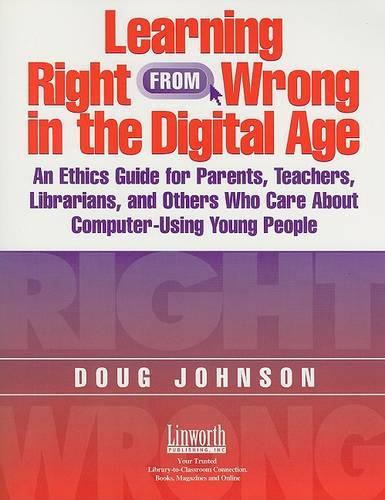
Learning Right from Wrong in the Digital Age: An Ethics Guide for Parents, Teachers, Librarians, and Others Who Care About Computer-Using Young People
(Paperback)
Publishing Details
Learning Right from Wrong in the Digital Age: An Ethics Guide for Parents, Teachers, Librarians, and Others Who Care About Computer-Using Young People
By (Author) Douglas A. Johnson
Bloomsbury Publishing PLC
Linworth Publishing, Incorporated
1st January 2003
United States
Classifications
General
Non Fiction
Politics and government
004.678083
Physical Properties
Paperback
175
Description
When students start using computers and networks, they start operating in a new, virtual world. Suddenly, behavioral lines blur: is it OK to download text from a website right into a term paper What should you say about computer chat rooms or copying software programs This new thoughtful and carefully written book helps youand your studentsunderstand today's information technology ethics, from downloading explicit pictures to guessing passwords to respect for privacy, property, and the law. Help students explore the ethics of digital technology Includes the Ten Commandments of Computer Ethics with key moral imperatives for students of all ages
Reviews
Johnson's guide should be required reading. It makes elementary what is often unclear and ambiguous and provides analogies of situations to point out how stealing is stealing whether it's in a store or in a virtual situation. His approach is to entice discussion and allow the students to discover the answer to the ethics question in a variety of settings. After an overview of the difference between the physical and virtual world in regard to ethical codes, several sections are devoted to scenarios of various behaviors that involve privacy, property, and appropriate use of information. Each scenario provides discussion topics as well as the relationship to National Learning Standards. Resources such as privacy and search policies, and Web sites are provided for more information. One section specifically instructs teachers, librarians and parents on what students need to know in order to practice ethical behavior with computers. It offers information about Acceptable Use policies, Web Site Guidelines, Library Rules, and Plagiarism Guidelines. It reminds teachers how to create plagiarism proof assignments and describes what parents can do at home to teach and encourage ethical behavior. Finally, appendixes offer sample documents of those policies that all schools and libraries should have available. Highly Recommended. * Library Media Connection *
Author Bio
Doug Johnson is director of Media and Technology at I.S.D. 77 Mankato Public Schools in Minnesota.
